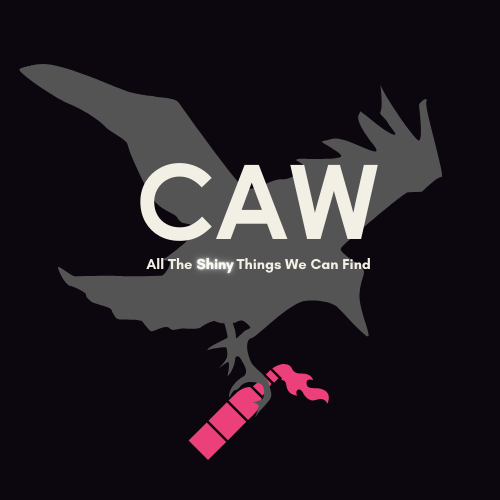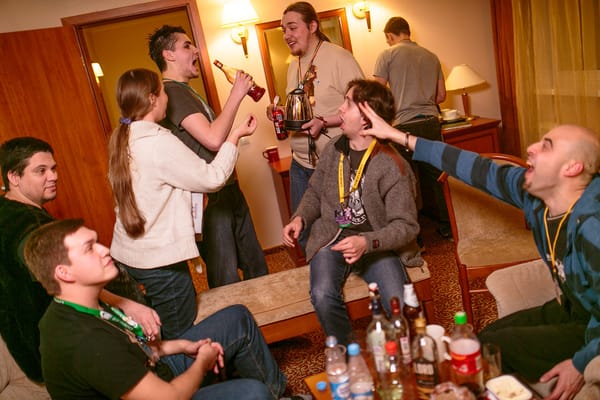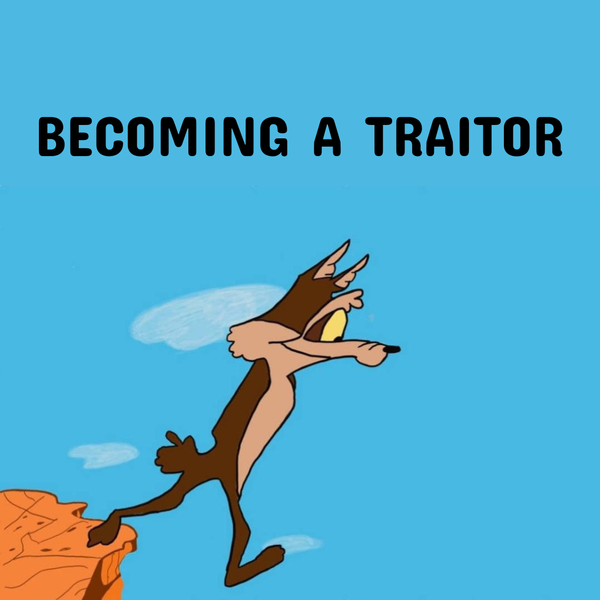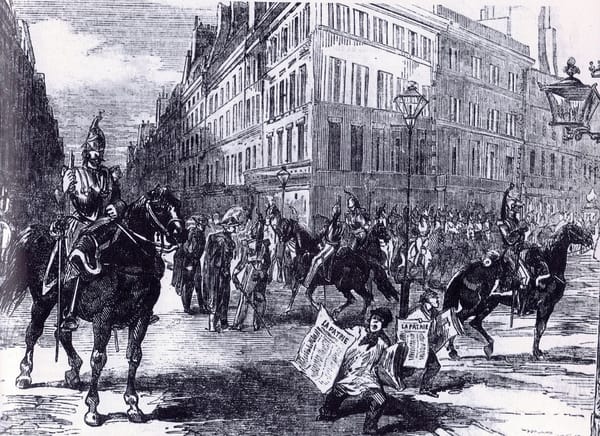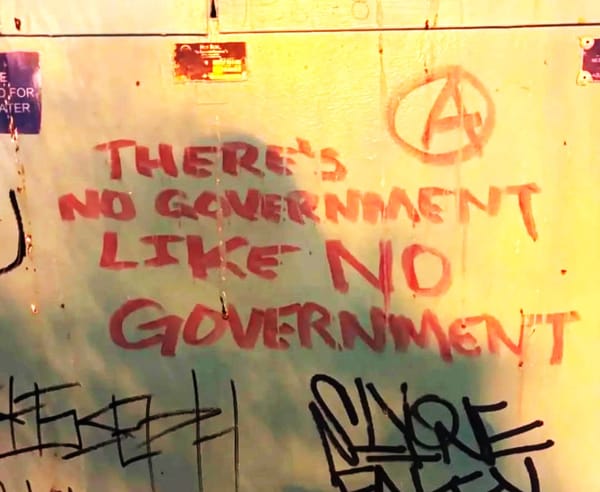Disaster Looting and the LA Fires
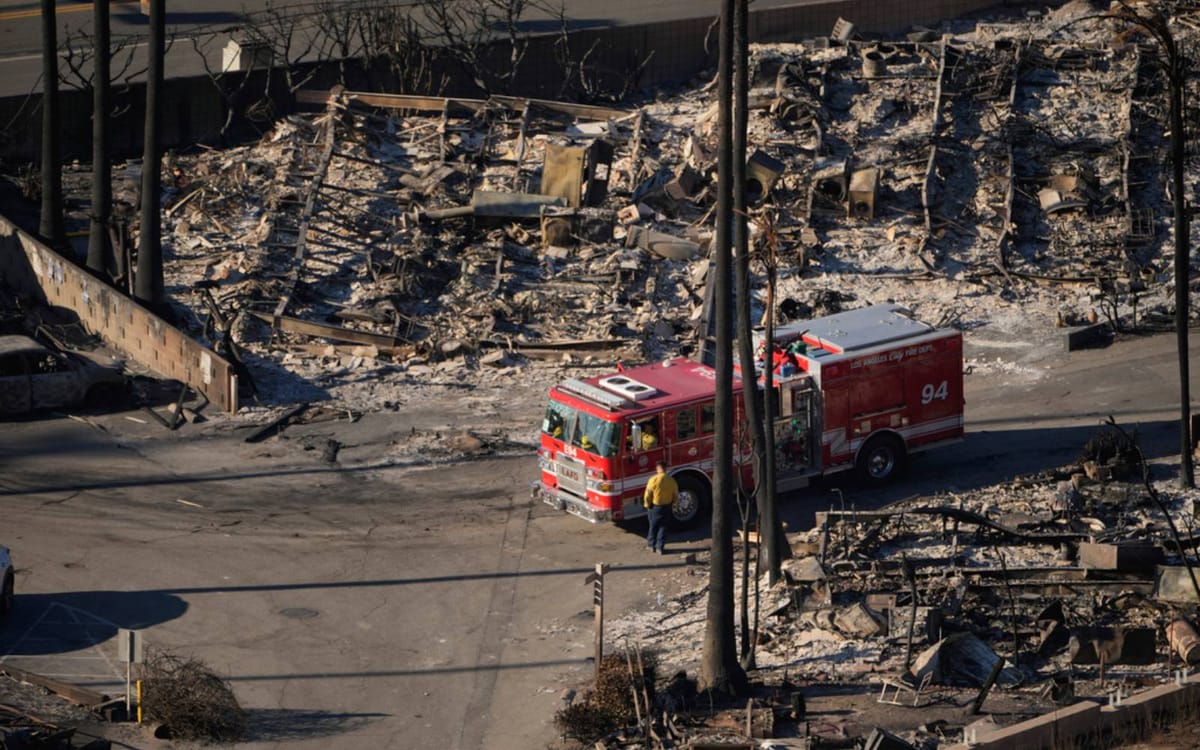
As the fires began to get under control in LA, news media started reporting on arrests for looting, and in particular the presence of the military police "maintaining order" in the overwhelmingly non-white and poor Altadena. I wrote about the use of looting panic as a form of anti-black state reconstruction in the face of natural disaster in my 2020 book, In Defense of Looting, and I have excerpted the relevant section below, in the hopes it will be useful.
"For dating the end of the sixties in the US, historical accounts converge consistently around the end of the Vietnam War in 1975, as the antiwar movement provided the most consistent activist base for mass action across the United States, particularly after the split and collapse of the Black Panther Party’s national membership in 1970–1971. But perhaps the one moment that most solidified the turn in national politics away from upheaval, social justice, and equality and toward that reactionary suburban politics of white grievance and white vengeance known as “color-blindness” and “law and order” was the blackout looting in New York City in the summer of 1977.
A massive power failure on the brutally hot night of July 13, 1977, instigated by lightning striking electric lines north of the city, plunged New York City into darkness. People spilled out into the streets to help one another, to party, and to loot, burn, and fight with police. Over sixteen hundred businesses were looted in the twenty-five hours of blackout, and forty-five hundred people were arrested — the largest mass arrest in New York City history.
Looting mostly took place in poor Black and Latinx neighborhoods. Arson and looting were so dire in Bushwick that business owners refused to move back into the neighborhood for a decade after the blackout, but more than thirty neighborhoods in the city were affected. The most brazen acts of looting included teens driving fifty Pontiacs directly out of a showroom in the Bronx. The widespread looting of otherwise unaffordable turntables and mixing equipment is often cited as a crucial moment in the birth and growth of hip-hop and DJ culture.
During the looting, Black businesses were targeted just the same as white ones. Without the clear racial demarcation between businesses that many pointed to in the sixties as evidence of looting’s “political” nature, and without an initiating event of police brutality, defense of the looting required directly challenging class society, not just racism. It required directly aligning with the “antisocial” actions of the proletariat in making their own lives better at the expense of law and order. You’d have to stand with them as they acted outside and against white supremacist commodity society, even when they were not legibly “protesting” it.
But the riots not only lacked an obvious political content, they also lacked a movement. The rise of the Black middle classes after civil rights victories had, by 1977, reinforced and widened a significant class line within Black communities. Income, wealth, and unemployment rates of poor folks in the late seventies were often worse than they had been in the sixties, but a small class had benefited. Black middle-class business owners and politicians, who had replaced movement leaders as “representative voices,” disavowed the looting: after all, it attacked their interests. The editorial board of Harlem’s Amsterdam News led the charge for the Black middle class, writing an excoriating denunciation of the looting that was reprinted in papers throughout the country to provide cover for more openly racist antilooting positions.
Arrested looters, meanwhile, were processed with a deliberate slowness that left thousands in horribly overcrowded cells for five or six days in the middle of a record heat wave. Given rotten food and insufficient water, they languished in collective punishment. “We slept on the floor with our hands next to our body like the slaves brought over from Africa,” one arrestee testified. It was a rather direct example of what Christina Sharpe calls Black life “in the Hold.” As a way of reasserting property relations after an act of looting, the state turns to its foundational strategies and reintroduces the logistical techniques of the slave ship. Looters are punished for their act by the traumatic (re)experiencing of the conditions of the slave ship, an experience that shadows all racialization and all property relations in America.
But police, judges, and the mayor played down this horrific violence, instead participating in a broad dehumanization of the looters. They used the fact that the municipal government of New York City was in dire financial straits — nearly bankrupt, it had been devastated by white flight and by the general economic downturn of the seventies — to falsely claim they couldn’t afford to process looters in a timely fashion.
The poverty in the city was immense. Liberal economic and social welfare policies had utterly failed to rectify the situation, as Great Society programs, already too small to combat the problems of the late 1960s, were completely insufficient in the face of the collapse and stagnation started in 1973. White flight into the suburbs decimated the city’s tax base at the same moment that the economy went into crisis. What the programs had done, however, was give white people an excuse to blame the Black and Latinx poor for their own condition. After all, hadn’t they been receiving welfare, War on Poverty programs, affirmative action, and all sorts of other special treatment from the government?
In his history Blackout, James Goodman traces how this shift was made visible through the New York Times coverage of the blackout. The editorial board at first attempted to explain and understand the looting through the familiar liberal sociological lens of poverty, unemployment — which was at Great Depression levels in Black and Latinx communities — and lack of services. But white subscribers, many of them now living far outside the city, wrote in by the thousands, objecting, calling the looters “animals” and “parasites.” Such “debates” happened in media across the country, and it was the white suburban voice — which included not only the newspapers’ and TV stations’ owners and editorial boards but also the majority of paying customers — that won out. The looting, white people insisted, was not about poverty — after all, weren’t they living high on their welfare checks? — but about the degradation of morals and a culture of lawlessness, laziness, and entitlement.
There would be no government inquiry, no sociological study: the looters would not be asked why they had done it. The mayor, Democrat Abraham Beame, lost the mayoral primaries that fall to conservative Ed Koch in large part as a result of the blackout rioting. Koch fomented outrage and blew dog whistles, criticizing Beame for not bringing in the National Guard and not letting police attack looters more violently, riding “law and order” racism straight into Gracie Mansion.
The widespread dehumanization of looters and arsonists, of criminals, in the aftermath of the blackout helped consolidate the new white supremacist politics of “color-blind” mass incarceration, precarity, poverty, and police murder. Looting became an excellent symbol for this new form of the old racial politics: it can be easily pointed to as a form of the “shamelessness” of criminals. Taking place during mass unrest, it can be treated as representative or reflective of a (Black) cultural or social attitude as well as a general societal breakdown of law and order that requires more authoritarian politics to “renew” the country. Meanwhile, looting’s submerged history as a racialized relationship to property is safely evoked without directly using “racist” language. “Looter” becomes a perfect color-blind dog whistle.
This is why, on whitehouse.gov, Donald Trump’s administration could write, on their special “Standing Up for Our Law Enforcement Community” page: “Our job is not to make life more comfortable for the rioter, the looter, or the violent disrupter. Our job is to make life more comfortable for parents who want their kids to be able to walk the streets safely. Or the senior citizen waiting for a bus.” The “rioter” and “looter” is summoned as an innate enemy of the government and of the people, of “us.” What about the Black parents who just wanted their kids, like Michael Brown, “to be able to walk the streets safely”? Black mothers and fathers are here purposely excluded from the body politic, and yet the government hasn’t directly used any racialized language. Anti-rioting is one of the major ways ethnonationalist power talks about its work of racist oppression...
...The 2000s were a terrible decade of social dissolution and oppression in the United States. The “stability and prosperity” of the middle classes in the nineties were built on widespread increases in consumer debt, not increased wages; “welfare reform” had doomed millions to deeper poverty; NAFTA and other globalization trends continued to smash unions and pull blue-collar jobs out of the country; and mass incarceration had been expanded and accelerated to all-time highs by tough-on-crime “new Democrats.”
Movements fared badly, too. The alter-globalization movement, a bold, increasingly powerful, and militant association of anarchists, labor radicals, and other activists that made world headlines by rioting to shut down the World Trade Organization (WTO) in the 1999 Battle of Seattle, was utterly shattered in the reactionary aftermath of the September 11 terrorist attacks. In their wake, George W. Bush’s administration swung the state in an even more deeply authoritarian direction, consolidating incredible powers in the White House, vastly expanding surveillance, implementing more border and police apparatuses, and starting a forever “War on Terror” in the Middle East.
Massive antipolice riots in Cincinnati, Ohio, in 2001 and smaller anti-Nazi rioting in Toledo, Ohio, in 2005 could not stem the rightward swing and received little attention nationally. The biggest show of organized resistance to Bush’s regime, the 2003 protests against the Iraq War — which featured the largest single day of protest in world history — was simply shrugged off and failed to transition into an ongoing antiwar movement. And the immigrant rights movement, appearing on the scene with a massive strike and day of action, the Day Without an Immigrant on May 1, 2006, thereafter strayed increasingly toward patriotic, respectability-focused, and Democratic Party–centered reform strategies.
The nadir of the entire period came in 2005, when Hurricane Katrina hit the Gulf Coast. Katrina wreaked devastation across the South: 1,836 people died in the immediate flooding and chaos, and another few thousand died in the next six months from conditions exacerbated or caused by the storm’s destruction. And when the Mississippi River overflowed its banks, destroying the levees and flooding 80 percent of New Orleans, the anti-Black character of the Bush administration became terribly clear.
As the majority Black city drowned, and the waters rose to fifteen feet in many places, the federal government barely responded; a Canadian Search and Rescue team managed to get a support force to New Orleans faster than the Federal Emergency Management Agency (FEMA) did. When FEMA finally arrived, in many cases it actually slowed down rescue and evacuation procedures with bureaucratic power struggles, ridiculous paperwork, and general incompetence.
Kanye West’s statement at a televised fundraiser that “George Bush doesn’t care about Black people” was as clear a fact as could be. It was an important generational moment, what Mychal Denzel Smith refers to as a “rebirth of Black rage,” that was captured, shared, and disseminated widely by millennials using emerging internet technologies. But in those reactionary times, it was as far as the mainstream political conversation about anti-Blackness was going to go.
The municipal government of New Orleans, which had declared a forced evacuation before the storm, was utterly unprepared for the disaster — the police didn’t even have enough battery-powered radios to operate once the power went out — and local government totally collapsed. Those too poor, old, or sick to leave New Orleans were left alone, without food, route of escape, or safe haven in the midst of one of the largest natural disasters in US history. Of the nearly 1,836 people who lost their lives, most of them were poor, Black, and elderly.
Seven thousand prisoners, the vast majority Black and almost all arrested for minor crimes and misdemeanors, who were unlucky enough to be jailed at the time of the storm, experienced, as prisoners always do, some of the worst of government malevolence. They survived brutal beatings and pepper spraying by police and jailers and the utter terror of near drowning as they watched the waters rise from within locked cells. Then many were seated outside in handcuffs in the hot sun for days waiting for evacuation, only to spend the next year in prison, regardless of charges, as the governor suspended habeas corpus. This was referred to locally as “doing Katrina time.”
But rather than focus on the tragedy or the governmental crimes, media, both local and national, summoned instead the image of the Black looter. They reported sniping at helicopters, widespread arson, the killing of rescue workers, mass rape and murder in the Superdome — “thuggery,” they called it. Almost all of these stories were false and had to be retracted. Studies have consistently shown that in the wake of natural disasters people come together and help each other, and crime and violence drop dramatically, and Katrina was no different. But the retractions all came much too late. The enduring story of Katrina was of lawlessness, criminality, riot.
White vigilantes and police officers, stewing in the paranoia and the summer heat, responded with murder and mayhem, though the full extent of their crimes is unknown (much of the evidence appears to have gone carefully unrecorded by police or was destroyed by the coroner and other governmental offices). Oppressive actors, such as property owners, the state, and white supremacists, use natural disasters to “restore” law and order through brutal violence. It is hard not to see in their violence in the face of governmental collapse the shadow of the violence of ex-Confederates in the chaotic early years of Reconstruction, and in particular in the New Orleans riot in 1866, when police and other ex-Confederate whites massacred forty-four Black delegates to the Louisiana Constitutional Convention.
Constructing a narrative of lawless Katrina survivors justified the horrifying actions of police and white residents. Police murdered families fleeing New Orleans, most infamously killing two and seriously wounding four unarmed refugees on the Danziger Bridge and murdering Danny Brumfield in front of the convention center — crimes for which cops were actually prosecuted, although only a decade later. When two Black men went to a police outpost looking for an ambulance to take their friend Henry Glover, dying of a gunshot wound, to the hospital, police instead arrested and brutally beat the two men, left Glover to bleed to death in the back of the car, then drove the car to a levee and lit it on fire so as to not deal with his body.
These cases garnered a lot of media attention, and so prosecutors focused all their energy and resources on them. But similar crimes went pointedly uninvestigated. In white, middle-class Algiers Point, a militia formed “to protect the neighborhood from looters and criminals” that in fact hunted Black refugees. One vigilante, Wayne Janak, interviewed in a documentary made after the storm, described killing Black survivors as follows: “It was great! It was like pheasant season in South Dakota. If it moved, you shot it.” Another, Nathan Roper, says police gave them support and instruction to kill: “If they’re breaking in your property, do what you gotta do and leave them [the bodies] on the side of the road.” The emergence of “Stand Your Ground” laws, the first of which came into being in October 2005 in Florida, another state badly damaged by Katrina, codified into state laws these forms of white supremacist vigilante murder.
Because these victims might have been “looting” — though they were almost certainly just trying to get to the evacuation point in Algiers — their deaths were disregarded, and the militiamen, who proudly described their actions on video, went unpunished. Journalist A. C. Thompson interviewed Tulane University historian Lance Hill (author of The Deacons for Defense, cited extensively elsewhere in this book) about the situation: “Because of the widespread notion that blacks engaged in looting and thuggery as the disaster unfolded, Hill believes, many white New Orleanians approved of the vigilante activity. ‘By and large, I think the white mentality is that these people are exempt. … I think that if any of these cases went to trial, and none of them have, I can’t see a white person being convicted of any kind of crime against an African-American during that period.’”
The New Orleans PD intentionally kept very few records during the disaster, and the coroner also seems to have destroyed and covered up information about bodies that came through his office.
Thus “looting,” real or imaginary, becomes an instant marker of the “No Humans Involved" category described by Sylvia Wynter. From the NYC blackout to LA to Katrina, looting became the prototypical crime of the Black, poor, and surplus, an act that immediately exiled its perpetrators from the human community and sentenced them to death, an action that proved the righteousness of their disposability. It’s no wonder, after such violent categorization, that people in movements today want to disavow looting or distance “real protesters” from looters.
But we must not reproduce that mark of NHI on our comrades, our siblings in the struggle. Instead, we must join them to overthrow the world that would see anyone so marked."
